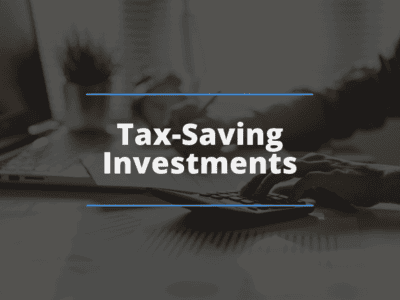Taxes are an unavoidable part of life, but that doesn’t mean you have to let them eat away at your hard-earned investment returns. Using tax-saving investments is a strategic approach to maximizing your wealth over the long term. By utilizing various tax-friendly accounts and investment techniques, you can significantly reduce your tax bill and keep more of your money working for you.
Remember, tax laws can be complex and change over time. It’s always recommended to consult a tax advisor or financial professional to discuss how these strategies align with your individual financial situation.
Tax-Advantaged Accounts: Your Best Weapons
Tax-advantaged retirement accounts are the cornerstones of tax-smart investing. They offer unique tax benefits allowing your investments to grow faster and give you more control over when you pay taxes. Let’s break down the most common types:
Individual Retirement Accounts (IRAs)
Traditional IRAs
Contributions may be tax-deductible in the year you make them, lowering your current taxable income. Your investments grow tax-deferred, meaning you don’t pay taxes on gains until withdrawals in retirement for traditional IRAs.
Roth IRAs:
Contributions to Roth IRAs are made with after-tax dollars, so you get no immediate deduction. However, qualified withdrawals in retirement, including all of your investment gains, are tax-free!
Employer-Sponsored Retirement Plans (401(k), 403(b), TSP)
These powerful plans offer similar benefits to IRAs. Contributions are often made on a pre-tax basis (like a Traditional IRA), and many employers offer matching contributions – essentially free money to boost your retirement savings!
Health Savings Accounts (HSAs)
These triple-tax-advantaged accounts are designed to help you save for qualified medical expenses. Contributions are pre-tax, investments grow tax-deferred, and withdrawals for eligible healthcare costs are tax-free. HSAs can be a powerful tool for retirement investors.
Beyond Retirement Accounts: Tax-Smart Investing Strategies
While tax-advantaged retirement accounts are incredibly powerful, they only represent one piece of the tax-saving investing puzzle. Here are strategies for minimizing taxes within your taxable investment accounts:
Asset Location: This involves strategically placing investments in different account types to maximize tax efficiency.
Taxable Accounts: Prioritize these for tax-efficient investments like index funds and exchange-traded funds (ETFs), which tend to generate fewer taxable distributions.
Tax-advantaged accounts: These are better suited for holding investments that frequently produce taxable income, such as bonds or Real Estate Investment Trusts (REITs).
Tax-Loss Harvesting: This is a valuable technique when some of your investments have declined in value. By selling those losing positions, you can generate capital losses to offset capital gains from other investments you’ve sold at a profit. This can help reduce your overall tax burden for the year. Be mindful of the wash-sale rule, which can disallow a loss if you repurchase the same or a substantially similar investment within 30 days.
Long-Term Capital Gains: One of the most significant tax benefits in investing is the potential for lower tax rates on long-term capital gains. When you hold an investment for more than a year, the profits you earn upon selling are taxed at a lower rate compared to short-term gains (assets held for a year or less).
Additional Tips to Minimize Your Investment Tax Bill
- Municipal Bonds: Interest generated from municipal bonds is often tax-exempt at the federal level and may even be exempt from state taxes if the bond is from your own state. This can be especially attractive for high-income earners.
- Charitable Donations: If you donate appreciated assets like stocks or property to qualified charities, you may be able to claim a tax deduction while also avoiding capital gains taxes on the appreciated amount.
- Work with a Tax Advisor: A financial professional with tax expertise can guide you through complex strategies and ensure your investment plan aligns with your overall financial goals.
Conclusion
Understanding tax-saving investment strategies is a key part of becoming a financially savvy investor. By maximizing tax-advantaged accounts, employing smart investment techniques, and seeking professional advice when needed, you can significantly reduce the amount of taxes you pay on your investments. This means more of your money stays invested and has the potential to compound over time.
